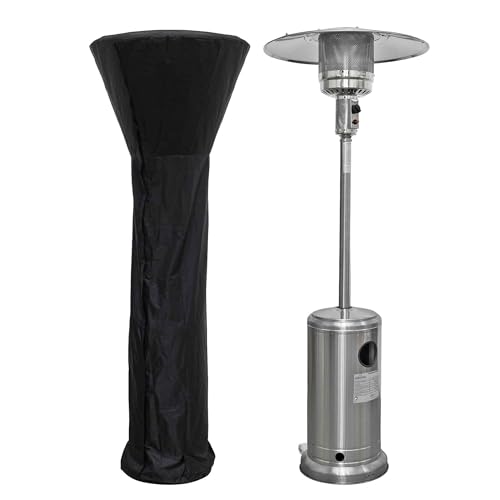Garden Heating Solutions: Enhancing Outdoor Spaces Year-Round
As seasonal modifications bring differing temperature levels, garden lovers deal with the challenge of keeping their treasured outdoor spaces. Whether for cultivating plants, entertaining visitors, or just delighting in the fresh air, garden heating solutions are crucial to maximizing pleasure and functionality. This short article checks out various options readily available for heating gardens, including traditional and modern solutions, their benefits, and practical tips for implementation.
Comprehending the Need for Garden Heating
A well-kept garden needs to be a year-round sanctuary, using break in both summer and winter. The need for garden heating arises from:
- Frost Protection: Certain plants, specifically tender ranges, require security from frost to endure colder months.
- Extended Growing Seasons: Heating solutions can permit earlier planting in spring and later on gathering in fall.
- Convenience Optimization: Outdoor gatherings and activities can take location more conveniently with controlled temperatures.
Kinds Of Garden Heating Solutions
Garden heating solutions can be divided into a number of categories based on their innovation and fuel source. Here's a detailed look at some popular options:
1. Electric Heaters
Electric heaters are a versatile choice for smaller sized gardens and outdoor patios. They are simple to set up and run, providing instant heat with very little effort.
- Types of Electric Heaters:
- Patio Heaters: Freestanding systems with a heating aspect that radiates heat.
- Wall-mounted Heaters: Ideal for small areas; these heaters conserve ground space while supplying heat.
- Portable Electric Fans: Great for targeted heating in specific locations.
2. Gas Heaters
Gas patio heaters are a standard option for outdoor heating and are commonly valued for their effectiveness and visual appeal.
- Kinds Of Gas Heaters:
- Propane Heaters: Easy to carry and set up, appropriate for most outdoor settings.
- Natural Gas Heaters: Permanent fixtures, perfect for places with existing natural gas lines.
3. Wood-burning Solutions
For a rustic touch, wood-burning solutions such as fire pits and chimineas include heat and ambiance to gardens.
- Benefits and drawbacks of Wood-burning Heating:
- Advantages: Aesthetic appeal, social atmosphere, and reliable heat circulation.
- Drawbacks: Requires more maintenance, management of ashes, and possible fire threats.
4. Infrared Heaters
Infrared heaters utilize infrared radiation to directly warm things, making them energy-efficient and best for outdoor areas.
- Advantages: Immediate heat, minimal energy loss, and viability for all weather.
5. Outdoor Heating Mats and Blankets
For smaller sized patio locations or particular zones in a garden, heating mats and blankets can be an innovative solution to supply an extra layer of heat.
Factors to consider for Choosing a Heating Solution
When selecting the best heating service for a garden, numerous elements should be evaluated:
- Garden Size: Larger areas might need multiple heating sources for reliable heat.
- Spending plan: Various options exist at different cost points. Outdoor Heating Options -effectiveness can identify the picked method.
- Security: Evaluate the safety functions of the heating options, particularly when utilizing gas or wood-burning solutions.
- Visual Appeal: Integration with garden design can enhance overall visual pleasure.
Table 1: Comparison of Garden Heating Solutions
| Type | Setup | Fuel Source | Effectiveness | Expense |
|---|---|---|---|---|
| Electric Heater | Easy | Electrical power | Rapid/Immediate | Moderate |
| Gas Heater | Moderate | Propane/Natural | High/Effective | Moderate to High |
| Wood-burning Option | Moderate/Hard | Wood | Reliable | Low to Moderate |
| Infrared Heater | Easy | Electricity | Immediate | Moderate to High |
| Heating Mats/Blankets | Easy | Electrical power | Targeted | Low to Moderate |
Executing Garden Heating Solutions
To ensure effective heating in outdoor settings, a strategic method is needed. Here are some practical ideas:
- Evaluate the Layout: Consider the garden layout to determine locations where heating is most needed.
- Pick Multidirectional Heaters: This will help disperse heat more uniformly across the space.
- Improve Insulation: Utilize windbreaks (like garden walls) or heat-retaining materials around the heating setup.
- Incorporate Decor: Attractive styles of heating units can improve the garden's ambiance while supplying heat.
- Regular Maintenance: Ensure that heaters (particularly gas and wood-burning) are maintained for optimum efficiency and security.
Frequently Asked Questions About Garden Heating Solutions
1. How safe are electrical heaters for outdoor use?
Electric heaters created for outdoor usage are generally safe when set up properly. Constantly follow producer standards and safety directions to reduce dangers.
2. Can I leave my gas heater outside throughout winter?
While many gas heaters are built for endurance outdoors, it's suggested to cover them or store them indoors to safeguard them from extreme climate condition.
3. Exist energy-efficient options for heating my garden?
Yes! Infrared heaters and heating mats are especially energy-efficient as they focus heating in particular locations instead of warming the surrounding air.
4. What are the finest plants to grow in a heated up garden?
Popular choices consist of tomatoes, herbs, peppers, and other tender plants that grow in temperatures above 50 ° F (10 ° C).
Garden heating solutions immensely boost outdoor spaces, enabling year-round satisfaction and enhanced plant growth. By comprehending the numerous kinds of heating options available and making informed options based on individual choices and specific garden conditions, garden fans can change their outdoor areas into relaxing retreats, regardless of the season.

